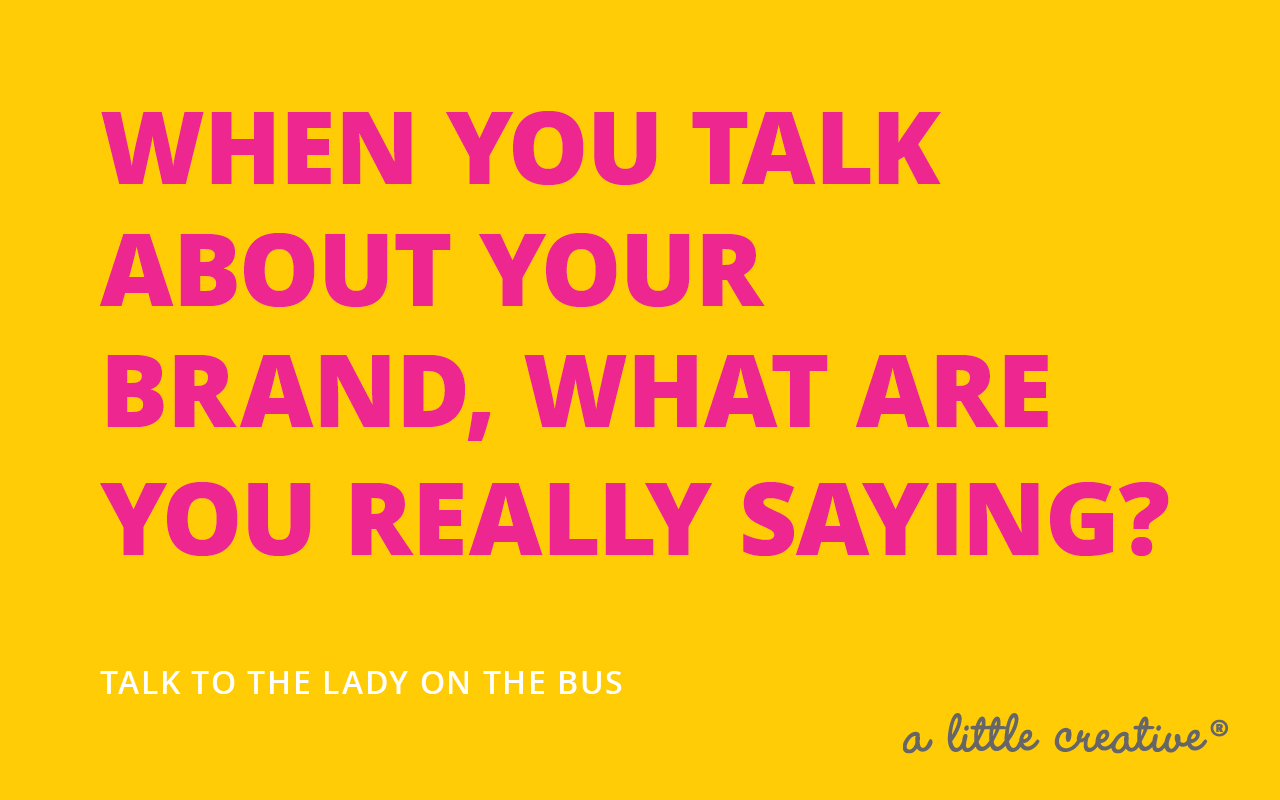
At the risk of sounding like a broken record, your brand is not your logo. It’s an experience. There are a lot of elements that make up your brand, that when working together, help define it. Among them is your messaging; your words. Learning how to talk about your brand, in a way that your customers understand, is important.
Words are important. They can inspire and describe us; who we are personally, professionally — fundamentally. And we all have words that resonate with us and feel like we identify with. But have you ever stopped to think about how your customer reads these words? Have you considered how you’re using them and how well they’re actually communicating who you are and what you do?
It’s common practice when working with a designer through the branding and visual identity process to identify a number of keywords that you feel accurately represent you and/or your brand. It’s even part of my process. But often, it stops there. Hats get hung on keywords that might sound original or uncommon, when in reality, they may only have meaning to those identifying them.
What do those keywords really mean?
What do they say about who you are, how you do business, and the benefit that your customer receives because of it? Those are the words you should be using.
I’ve recently expanded my process because of this to deepen the understanding of the brand, for myself, my customer, and my customers’ customer. We identify keywords, but then we go on to define them. Without definition, they may not be clearly understood by everyone, most importantly, those you’re trying sell to.
I worked on a rebrand with a client recently, which included a visual identity as well as some help with the website. Every time we spoke, the client would talk about how technical their business. At first, I didn’t think much of it, but the more I heard it, the more confused I became.
In the year 2017, technology is incredibly commonplace in business, with many people operating solely online. So what the hell did technical even mean and why was this something they felt was important to emphasize? How exactly would their customer benefit from their team being technical and how exactly were they “technical” anyway?
That’s when the magic happened.
We started to get into the finite details of how they used technology behind the scenes. Operating in an industry that still functions largely analog, they didn’t. They incorporate digital document uploading, signing, and archiving so that their clients don’t have to make special trips to an office or offsite location and thus, can communicate from anywhere that offers a wifi connection.
This is the how their customer benefits. By them being “technical”, they save their clients time and create a greater sense of convenience and mobility. Um, yes, please. Who couldn’t use more time?!
Sometimes less is not more. More is more. Especially when it comes to how you talk about your brand. Especially on your website.
Often times, we assume that if a customer is visiting our website, they know something about what we do. Not true. In reality, many customers have no idea what it is you really do or who you are (unless they know you personally, of course). This is even more true if all you’re using are those keywords.
My advice: when it comes to talking about your brand, talk to the lady on the bus.
The lady on the bus likely has no idea what you mean when you say you’re “technical”. But if you define what technical means to you and how she will benefit from it through your work; that she’ll understand!
I’m going to take my own advice and review my own website copy to see what I’m really saying (and who I’m talking to). I challenge you to do the same! Want an outside perspective? Hit me up and I’ll take a look at your copy and see if this old lady on the bus can understand it.